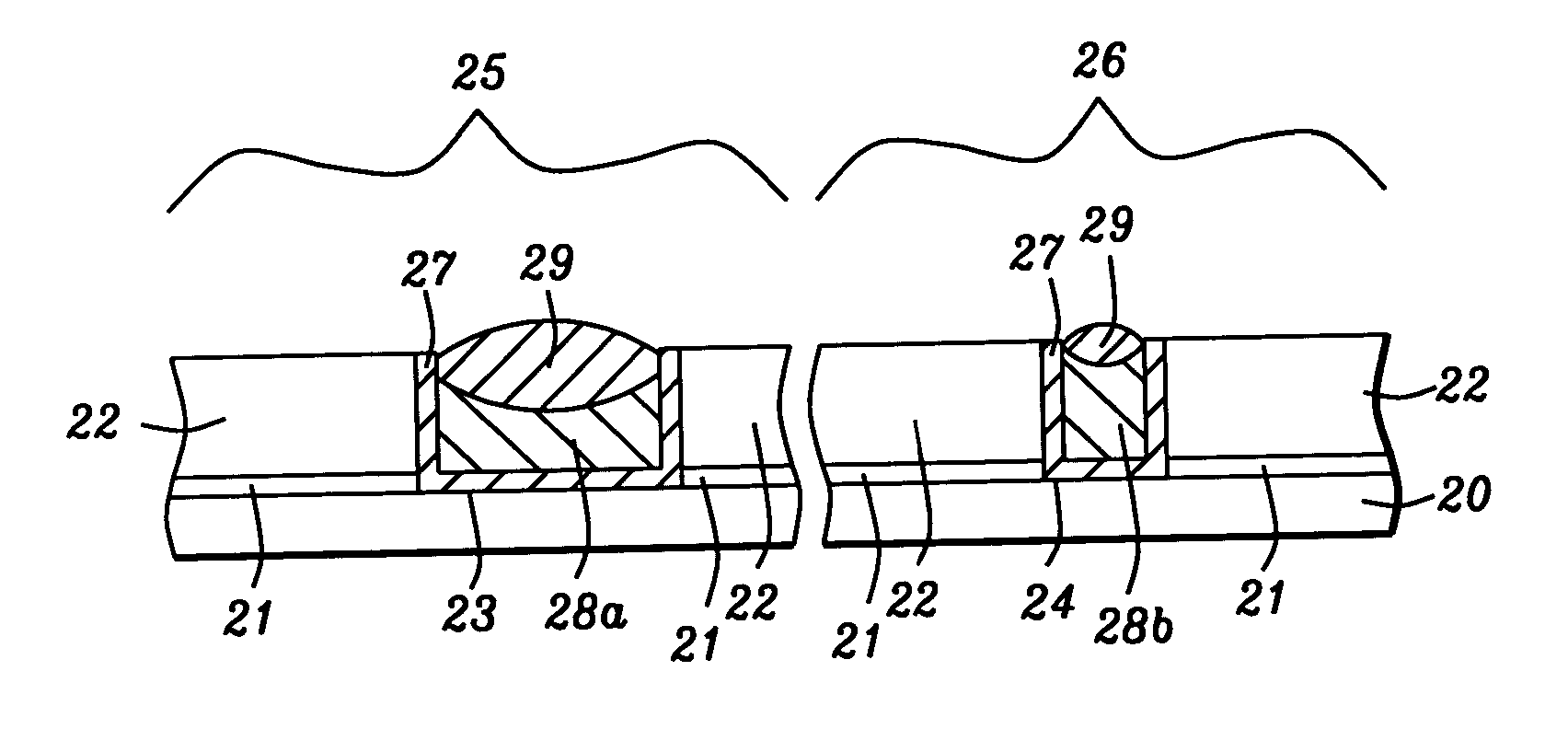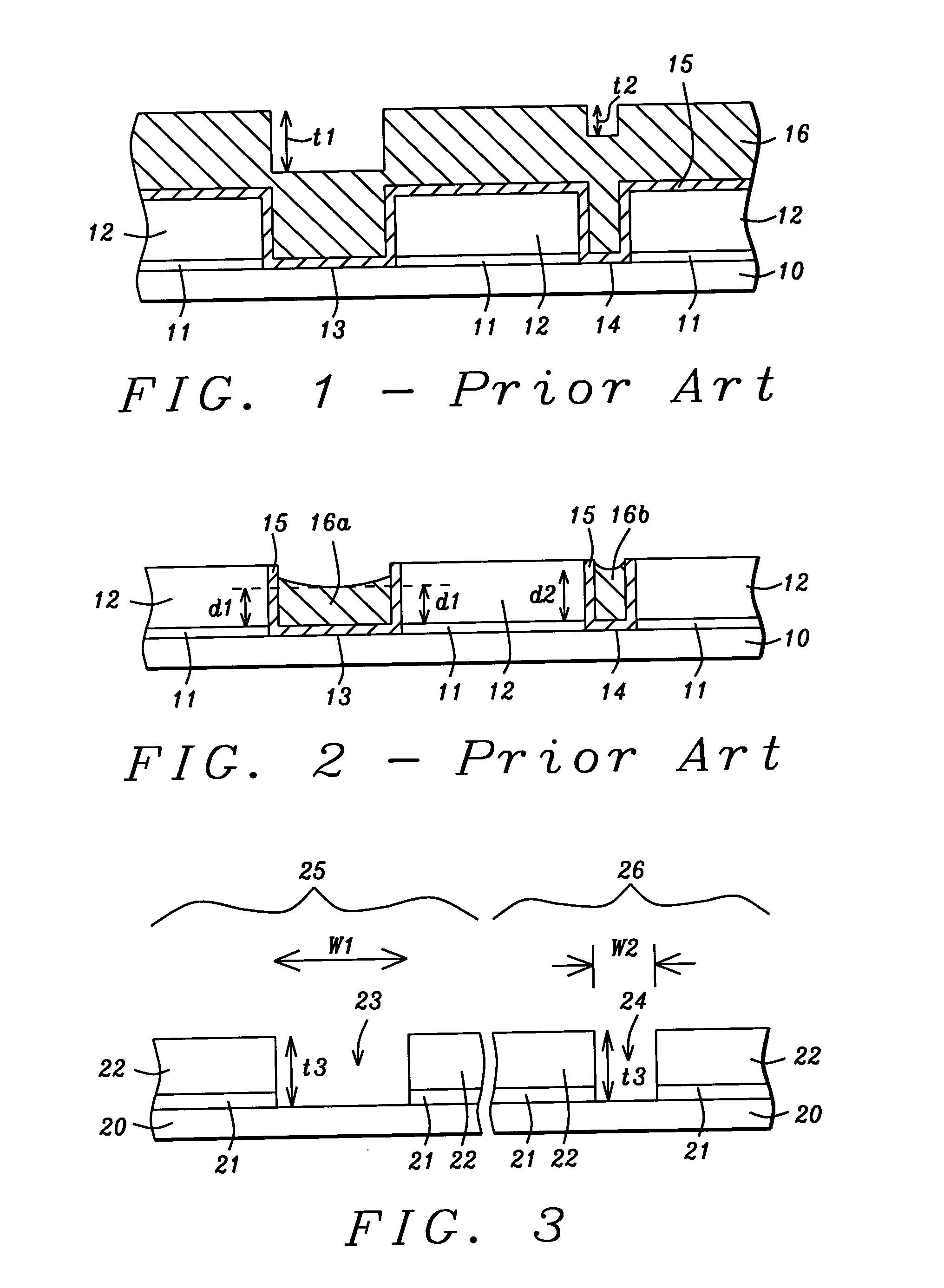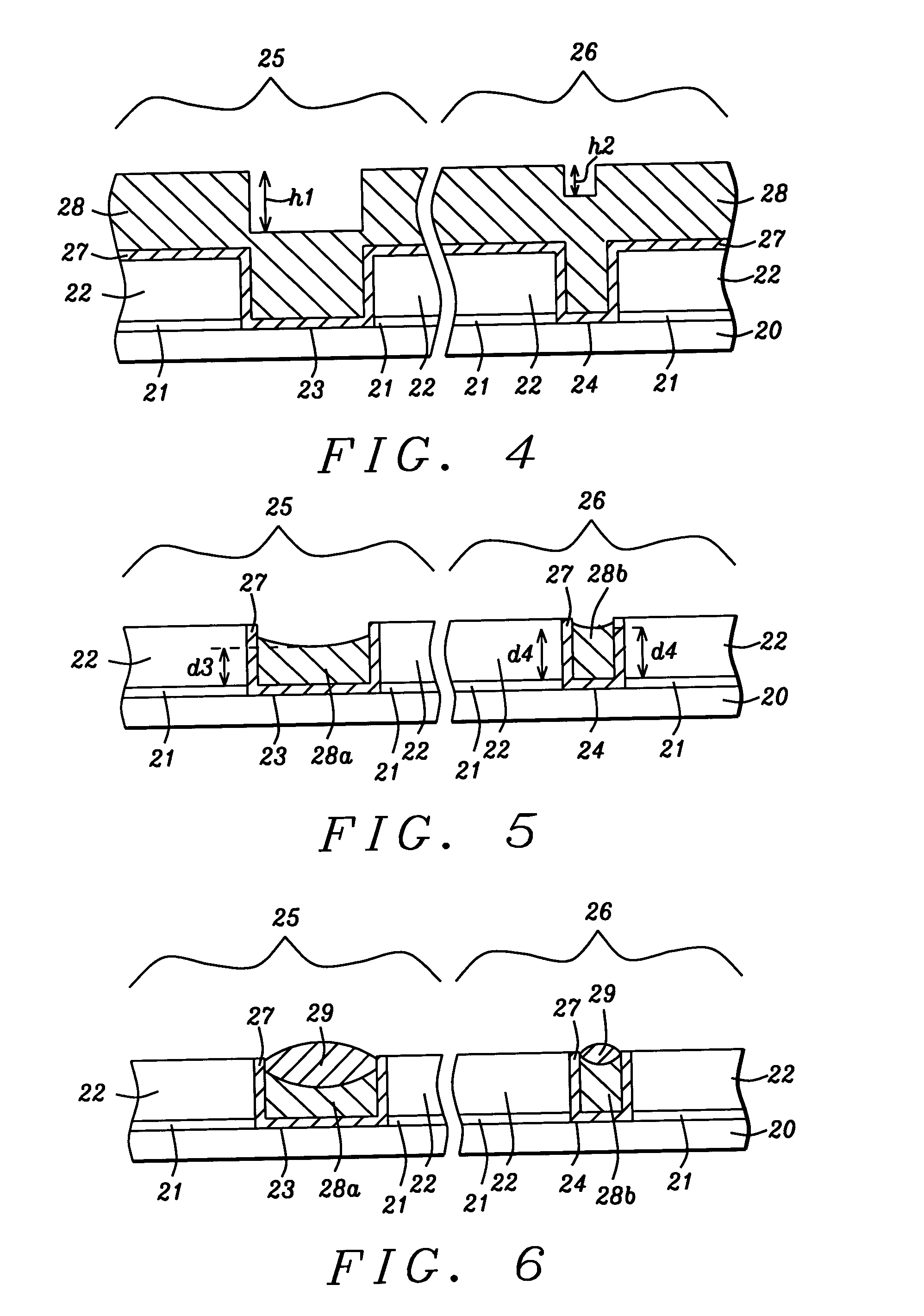Novel method to reduce Rs pattern dependence effect
- Summary
- Abstract
- Description
- Claims
- Application Information
AI Technical Summary
Benefits of technology
Problems solved by technology
Method used
Image
Examples
first embodiment
[0028] The present invention is a method that is particularly useful in forming copper interconnects with improved Rs uniformity and thickness. Although the drawings relating to the first embodiment depict a single damascene scheme, the present invention is also applicable to a dual damascene fabrication sequence. Moreover, the method of the present invention may be repeated a plurality of times on the same substrate to form a succession of copper interconnect layers that are arranged in a stacked design as is appreciated by those skilled in the art. The drawings are provided as examples only and are not intended to limit the scope of the invention.
[0029] A first embodiment is depicted in FIGS. 3-7. Referring to FIG. 3, a substrate 20 is provided that typically includes active and passive devices as well as conductive and dielectric layers that are not shown in order to simplify the drawing. Substrate 20 is preferably silicon but may also be based on silicon-germanium, gallium-arsen...
second embodiment
[0043] the present invention is depicted in FIGS. 8-12 in which high and low copper density regions are formed on the same substrate and are comprised of copper interconnects that have equivalent width. The collective surface area of interconnects formed in a high density region is greater than about 35% of the area of the region. The collective surface area of interconnects formed in a low density region is less than about 30% of the area of the region.
[0044] Referring to FIG. 8, a substrate 30 is provided that typically includes active and passive devices as well as conductive and dielectric layers that are not shown in order to simplify the drawing. Substrate 30 is preferably silicon but may also be based on silicon-germanium, gallium-arsenide, or silicon-on-insulator technology. An etch stop layer 31 with a thickness from about 100 to 2000 Angstroms is deposited on substrate 30 by a CVD or PECVD method and is comprised of silicon nitride, silicon oxynitride, or silicon carbide. ...
PUM
 Login to View More
Login to View More Abstract
Description
Claims
Application Information
 Login to View More
Login to View More - R&D
- Intellectual Property
- Life Sciences
- Materials
- Tech Scout
- Unparalleled Data Quality
- Higher Quality Content
- 60% Fewer Hallucinations
Browse by: Latest US Patents, China's latest patents, Technical Efficacy Thesaurus, Application Domain, Technology Topic, Popular Technical Reports.
© 2025 PatSnap. All rights reserved.Legal|Privacy policy|Modern Slavery Act Transparency Statement|Sitemap|About US| Contact US: help@patsnap.com



